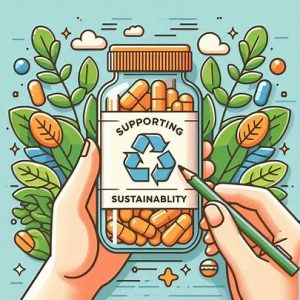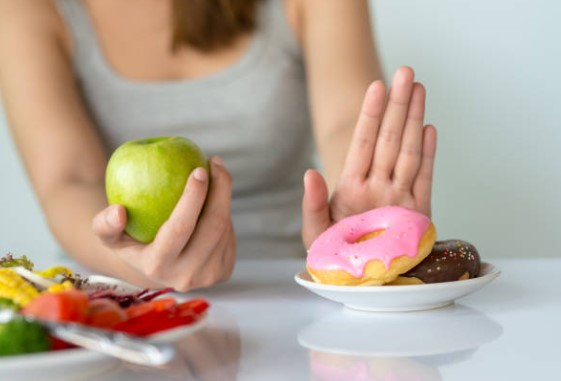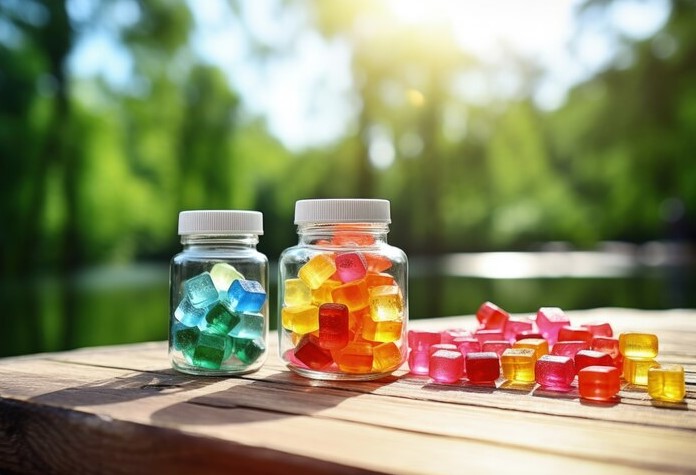
That smoking is bad for your health is old cake. We ignore that part of the impact of smoking here because it is already well known. But what do you know about the impact of smoking on the environment?
A single smoker who smokes a pack of cigarettes a day for 50 years has a water footprint comparable to 62 years of water supply for basic hygiene for three people. Also, the energy needed is comparable to the energy consumption of an average household in India for 15 years. That is one big reason why using e-cigarettes is more environmentally friendly than traditional cigarettes.
If you eat vegan but still smoke daily, research has shown that the environmental impact of your butts is actually greater than if you didn’t smoke but did eat meat!
So a vegan smoker has more negative environmental impact than a carnivorous non-smoker!
Quitting smoking is the goal of most smokers, but is often difficult to maintain. Perhaps this self-discipline can be motivated if you know the hugely negative effects of cigarettes and the tobacco industry on the planet.
And are there actually green options for smokers? A weird question actually. But we’ll figure it out!
The first cold figures
A study by the World Health Organization and a scientific article with a life cycle analysis by researchers from London unraveled shocking figures about the impact of tobacco on the environment (all the numbers we mention in this article come from this complete life cycle analysis).
Every year, nearly 6 trillion cigarettes are consumed by a billion smokers around the world.
The annual CO2 emissions of the tobacco industry are comparable to the emissions of twice that of Wales!
Each cigarette smoked is responsible for 3.7 L of water, 14 g of CO2 emissions, and the consumption of 3.5 grams of oil in fossil fuels.
Where do these numbers come from and can the tobacco industry be greened?
Tobacco cultivation
The problem starts with the amount of agricultural land needed for tobacco cultivation. For the 6 trillion annual cigarette production, about 4 million hectares of agricultural land are needed. This is relatively much land compared to other crops, so on the same piece of land, 6 times more weight of tomatoes or even 19 times more weight of potatoes can be harvested.
In addition, a lot of water is needed for tobacco cultivation, 22 billion tons of water are consumed annually by industry, where most of the water is used for cultivation.
Harmful chemicals such as 19 million tonnes of insecticides are also used for the cultivation of tobacco. These substances end up in rivers and seas and contribute to acidifying these waterways and threaten various plants and animals.
Tobacco is largely (90%) grown in developing countries such as India, Zimbabwe, Pakistan, and Malawi. These countries are already suffering from a food and water shortage, so the production of tobacco exacerbates this shortage.
As with many other products, consumption is highest in developed countries. This means that smokers in first-world countries literally and figuratively burn the raw materials of developing countries.
Drying tobacco
After harvesting the tobacco, it is dried, which is a process that requires a lot of energy. Often coal or wood is burned for it, which not only contributes to CO2 emissions but also to deforestation.
The production of cigarettes
The energy consumption in the production of cigarettes is the highest, of the 0.6 trillion (!) joules that are needed annually for the industry, almost everything goes to just cigarette production. The tobacco industry can therefore make itself a lot more sustainable if this energy is 100% green, for example by using solar or wind energy.
Of course, tobacco is not the only ingredient of a cigarette – more than 1 million tons of filters and more than 2 million tons of packaging are also needed annually for the high demand for cigarettes (excluding the cardboard used for transport).
In addition, hundreds of artificial additives are added to the tobacco itself, and the paper for rolling and packaging is bleached. The packaging is also laminated and printed with synthetic ink. All in all, every part of a cigarette is quite harmful – not only for your body but also for the environment!
When cigarettes are produced, they are transported. Altogether, 24.5 billion tonne-kilometers of freight are transported per year (1 tonne-kilometer is the transport of 1 tonne over 1 kilometer). Also not nauseous in terms of CO2 emissions.
Mountains of waste
As the most visible polluter of the whole process of the tobacco industry are the millions of non-degradable, harmful cigarette butts that make up the largest form of litter worldwide. The filters in the butts are full of junk, such as plastic (usually cellulose acetate) but also rat poison (arsenic), lead and other metals, residues of nicotine, and pesticides.
That is why the 2 million butts that are thrown on the ground per minute are extreme damage, and it is also difficult to clean them up.
In the Netherlands, streets are polluted with 10 million kilos of cigarette butts per year, 20% of which cannot be removed and therefore end up in the streets, ditches, canals, rivers, and the sea.
This large plastic pollution of cigarettes is harmful to various plants and animals on land and in the water that, for example, think it is food. It is also known that butts that are not disposed of correctly increase the risk of fire indoors and outdoors.
ALSO READ: Lean Belly Juice: Produce & Consume Sustainably
What is the industry doing about it?
Some tobacco companies are starting to take responsibility for the impact of the tobacco industry, but they still have a long way to go.
For example, Philip Morris shows in their report that they reduced their CO2 and water footprint by 24% between 2010 and 2015. In fact, British American Tobacco reports that its carbon footprint has declined by as much as 47% since 2000.
A good start, but there are hundreds of other brands, such as Marlboro and Camel, that have yet to be shaken up.
Are there green options available?
The Natural American Spirit brand is one of the largest brands that sell organic tobacco without any (synthetic and harmful) additives. Lucky Strike (made by British American Tobacco) also sells cigarettes without chemicals and other additives to the tobacco (the Natural products), just like FairGreen, Pueblo Natural, and Mohawk. These cigarettes still contain plastic filters.
The South African company Smokey Treats is the only company we could find that tries to improve multiple parts of the cigarette. For example, they do their best to harvest ethical tobacco, produce cigarettes with filters and paper that is not bleached and FSC certified, and use filters that do not contain plastic. At the moment they are only for sale in South Africa.
More and more biodegradable filters are coming onto the market. Companies such as Green Butts and Green Go produce filters that are broken down within a few days. Karma Filter Tips even goes a step further and has created filters from the pulp of fruits that are not only degradable and contain no chemicals, but also leave plant seeds after use. Nevertheless, plastic-free filters are still difficult to find in the store, especially in the Netherlands, and only some are available online.
Are e-cigarettes sustainable?
Some aspects of electronic cigarettes offer advantages, for example, fortunately, there are no cigarette butts that cause pollution, and the high carbon footprint of growing tobacco is not present here. The batteries can also be recharged (with any green energy) and no paper is needed for rolling.
It is therefore often thought that electronic cigarettes are ‘ecological’ and responsible products, or even healthier (which is not the case!).
So the opposite is true.
Electronic smoking is very similar to smoking a regular cigarette, but instead of heating tobacco, a liquid is heated which contains, among other things, nicotine and a taste. An e-cigarette consists of two main parts: the battery and a tank with the liquid that is evaporated.
But with e-cigarettes, there are other things involved. The biggest problem is recycling the materials and toxins in the liquid.
Firstly, many types of e-cigarettes are only used once and then thrown away, but also the type of e-cigarettes whose liquid you can refill are not yet recyclable. Actually, it is unclear where to throw it away at all (chemical, plastic or electronic?), since it still leaves many toxic substances such as nicotine, proypleenglycol, nitrosamine (which is carcinogenic), and heavy metals.
It is possible to recycle parts of an e-cigarette if you take them apart, such as recycling the battery and the liquid container if it is properly cleaned. In addition, e-cigarettes affect the air quality, not only inside a home but also around e-cigarette shops, for example.
Summary
If you weren’t already 100% convinced of the enormous damage of cigarettes and the tobacco industry, not only to public health but also to the environment, we hope this mailing has cleared that up!
Many activists are pushing the legislation that should ban plastic filters, which will hopefully yield results in the near future as most tobacco brands take little to no responsibility for the consequences of the industry.
Need help quitting smoking? There are different methods available, both online to intensive personal guidance or in a group – discuss it with your doctor and see what suits you best! On to a smoke-free generation!
 Every year, traces of pharmaceutical compounds find their way into rivers, lakes, and oceans. These substances, often flushed down toilets or released through waste systems, don’t just vanish. Instead, they persist, interfering with delicate aquatic life and ecosystems.
Every year, traces of pharmaceutical compounds find their way into rivers, lakes, and oceans. These substances, often flushed down toilets or released through waste systems, don’t just vanish. Instead, they persist, interfering with delicate aquatic life and ecosystems.

 NMN (Nicotinamide Mononucleotide) supplements are increasingly popular because of their potential to support healthy aging. As the demand for these products grows, it’s essential to consider how they are sourced and produced. Sustainable sourcing is critical for companies wishing to meet consumer expectations while supporting the environment.
NMN (Nicotinamide Mononucleotide) supplements are increasingly popular because of their potential to support healthy aging. As the demand for these products grows, it’s essential to consider how they are sourced and produced. Sustainable sourcing is critical for companies wishing to meet consumer expectations while supporting the environment. Sustainability is becoming a key factor in various industries, including health supplements. With increasing awareness about the environment, consumers now seek products that are not only effective but also eco-friendly. Nitric Boost Ultra is one such supplement that aims to improve men’s health while ensuring environmentally responsible practices. This article explores how nitric oxide supplements, like Nitric Boost Ultra, are produced with sustainability in mind, highlighting the eco-friendly aspects of the supplement industry.
Sustainability is becoming a key factor in various industries, including health supplements. With increasing awareness about the environment, consumers now seek products that are not only effective but also eco-friendly. Nitric Boost Ultra is one such supplement that aims to improve men’s health while ensuring environmentally responsible practices. This article explores how nitric oxide supplements, like Nitric Boost Ultra, are produced with sustainability in mind, highlighting the eco-friendly aspects of the supplement industry.








